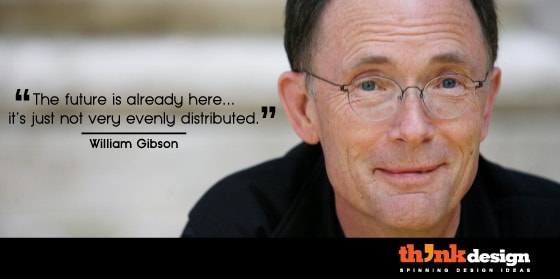Technological Disruption Now Haunting Design Community: A Debate

It’s a fact that today technology is replacing many jobs in the market, and it’s replacing fast even though humans have made these valuable technological tools to make work easy and convenient. For instance, there was a time when people used to wait for the mailman to deliver important messages. Now, you can view your messages in just one click. We don’t need to hire a mailman to do the job because e-mails have taken up that job.
Moreover, technological advancements have also provided us with choices. There was a time when only one channel was accessible through satellite service provider. However, today we have tons of choices, where some of them are yet to be explored. A decade ago, we would conveniently switch through the channels to watch what we like, whereas today, Millennials are watching all their favorite shows online, which will eventually take away jobs of many media and electronics professionals.

So you see, technologies are changing people’s lifestyles where humans work less and technology handles the rest. However, the thing we tend to forget is that technological disruption is taking away the job of the experts.
What Graphic Designers Do
Now let’s evaluate what graphic designers do and how technological disruption gives them trouble. Graphic designers work on ideas, concepts and content powerful as well as visually appealing to get the audience’s attention. This greatly helps marketers, businesses and institutions in marketing conversions.

Over the years, in the design field, computer advancements have somewhat replaced human intelligence and intellectual tasks. For instance, in a book on “Algorithms for Visual Design Using the Processing Language”, Kostas Terzidis writes:
“From Photoshop filters to modeling applications, and from simulation programs to virtual reality animation, and even more mundane tasks that used to need a certain talent to take on, such as rendering, paper-cutting or sculpting, the list of tasks diminishes day by day, only to be replaced by their computational counterparts”.
What Visual Design Tools Do
Visual design tools are reciprocating the same expertise but the tools are easy to operate. Marketers no longer need junior graphic designers to handle captivating images, compelling infographics, or convincing presentations. These tools have also solved the problem of dealing with designers and explaining them the idea and concept in detail as well. We have so many online design tools available now that are easy, learnable, and handy.
The visual tools have not only made the tedious, time consuming and redundant tasks quicker, easier and smarter, but it has also made the conceptual design ideas simple to execute. Canva is making amazing headways every single day to beat other online design tools. Affinity Photo is now proclaimed as a designer oriented tool to get things done without a professional designer.
These technological advancements are now becoming a question for designers. Probably, right now these tools haven’t taken over the design work completely. However, the speedy developments in the sector is a worrisome debate for designers. Here are some of arguments in a LinkedIn discussion.
I believe the problems are not the tools. Modern tools don’t make the designer. I think we forgot this along the way.
I believe all of us need to get back to the sketch book era of creating ideas. Or at least have a piece of paper handy to get past “first-thought” ideas. Lets all develop strategic design solutions and not just “point and click template” solutions. Designers are visual communicators, artists by heart. We develop ideas and then we can use modern tools to share our ideas.
I think 2016 will open the door to Creativity. The information age has dominated our brains and introduced the current thought that “everyone can be a designer” because anyone can click a button. As a result our audiences are fatigued. They want more from us.
I believe, those that can unleash creative ingenuity will find themselves ahead of those hanging on to their favorite or up-and-coming tools. Here’s to thinking for a living.
Matt Merrill

Yes it takes true skill, craft and discipline to successfully concept, develop and execute high-quality graphic design. The problem is most clients will not see the difference. Many others will not care because to them a $29 logo looks just the same as a $2,500 logo. It’s not their fault because they’ve never been trained to know the difference. Wix, Squarespace, Fivver, 99 designs, Pixeden, Visme, Adobe Mu and a slew of other DYI/off-the-shelf offerings are having a negative effect on the graphic design industry. As prices for these services drop, perceived client value will follow putting more and more pressure on true designer to lower their fees…
If you don’t think technology can completely reshape a creative industry where craftsmanship and skill are table stakes, go talk to any professional photographer over the age of 35 and get their take on it. Then look at where you got the last photo for your latest project. There are ways to navigate this changing environment and good designers will find ways to succeed. But sticking your head in the sand won’t be one of them. –Dean Logan
Designers have also argued that design tools cannot replace a designer. Because designer is much more than a machine, who can think – reflect and be creative with the design concepts.

As technology evolves, our brains will always remain a step ahead. It is us who is creating these creative tools. Yes life does get easier, to keep up with all these fast paced developments we need devices/software to make our lives a little less stressful. Humans didn’t stop walking with the invention of cars. Inanimate objects need us creative beings to make the creations, and we as designer need the tools, to give life to our imaginations. –hurita Chatterji
However, some professional designers think that these design tools are misinterpretation of original graphic design. Where, they are worried that people will no longer regard the design and it will eventually lose its essence.

As a “seasoned” professional I really take this “automation” thing seriously. As you recall all the “desktop publishers” who popped up and killed off a lot of really great typographers. Then those people dried up because they really didn’t have the knowledge to back up the skills they were “taught” through automation. The damage was already done. Typographers were out of business. In Los Angeles, Andreson Type was a formidable typographer….Gone. The perception by business is that the “automation” skillset is good enough and that real thinking is not a value. I’m concerned that the “automation” factor will take some toll on the graphics industry. Since more automation is the harbinger of lower wages. Unsustainable wages could be looming. It’s happened to other industries as they became more and more automated. –Matthew Schwartz
Contemporary Market
The contemporary market is saturated with almost all kinds of professionals. High caliber, experienced, professional visual designers who are currently working for multinational companies and popular brands are safe, for now. On the other hand, given the market scenario where small business owners have limited budget, and are stringent on hiring a pair of extra hands for designing, will either rely on marketers who have some visual design skills or turn to online design tools for generating marketing material designs. Design tools in this context are taking away the jobs of junior and amateur graphic designers in the industry.
Conclusion:
It’s a haunting thought – design tools are not actually technological disruption but are actually sweeping away the livelihood of many aspiring junior graphic designers. Eventually, will this disruption also be the cause for wiping out all graphic designers? I posted a discussion on this on LinkedIn a few weeks back to understand if graphic designers are really feeling the threat. The results were astounding. Creative directors, graphic designers, visual artists and UI designers have pitched in their views, heatedly. In a nutshell they reacted badly. Few replied positively and constructively to the problem and evaluated the issue with subjective reasoning. However, most were outraged with this hypothesis:
What do you think: can these new era tools replace the age-old designers’ need in the market? Follow Discussion. Here.
What I have perceived from the overall discussion is that designers are reluctant to address the issue at hand. Where, most of them were not even ready to accept that such a disruption could affect them.
Now, what do you think about this issue?



